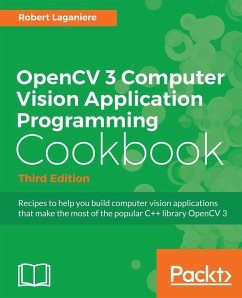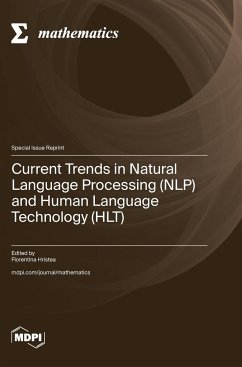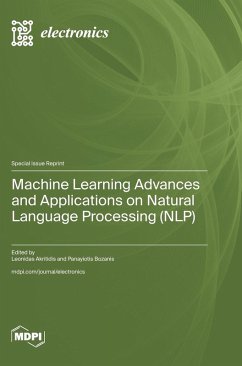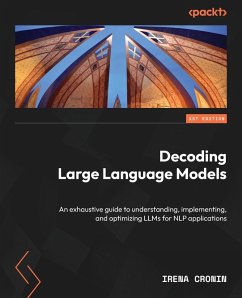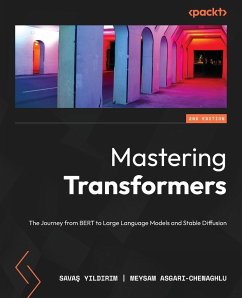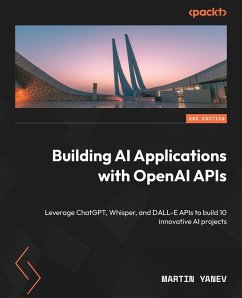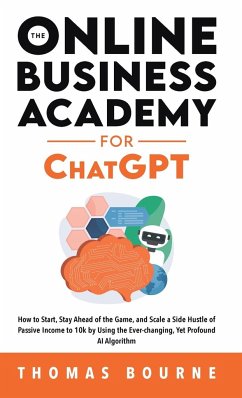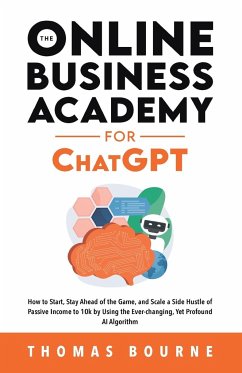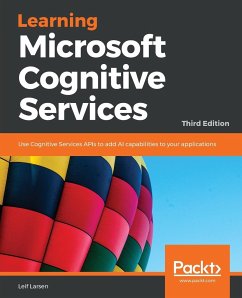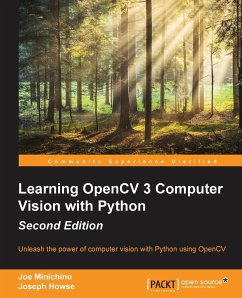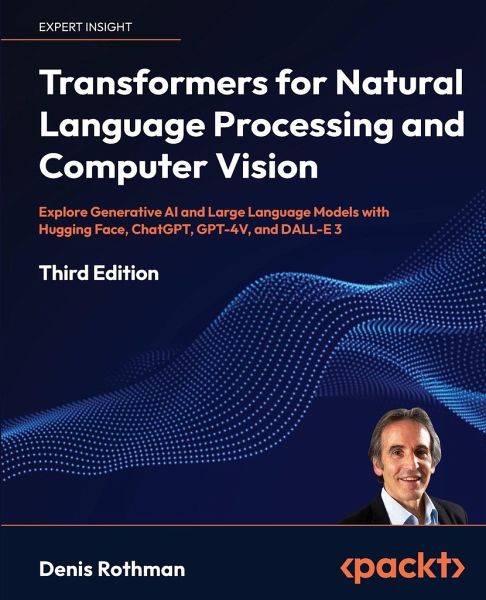
Transformers for Natural Language Processing and Computer Vision - Third Edition
Explore Generative AI and Large Language Models with Hugging Face, ChatGPT, GPT-4V, and DALL-E 3
Versandkostenfrei!
Versandfertig in 1-2 Wochen
56,99 €
inkl. MwSt.

PAYBACK Punkte
28 °P sammeln!
The definitive guide to LLMs, from architectures, pretraining, and fine-tuning to Retrieval Augmented Generation (RAG), multimodal Generative AI, risks, and implementations with ChatGPT Plus with GPT-4, Hugging Face, and Vertex AI Key Features - Compare and contrast 20+ models (including GPT-4, BERT, and Llama 2) and multiple platforms and libraries to find the right solution for your project - Apply RAG with LLMs using customized texts and embeddings - Mitigate LLM risks, such as hallucinations, using moderation models and knowledge bases - Purchase of the print or Kindle book includes a free...
The definitive guide to LLMs, from architectures, pretraining, and fine-tuning to Retrieval Augmented Generation (RAG), multimodal Generative AI, risks, and implementations with ChatGPT Plus with GPT-4, Hugging Face, and Vertex AI Key Features - Compare and contrast 20+ models (including GPT-4, BERT, and Llama 2) and multiple platforms and libraries to find the right solution for your project - Apply RAG with LLMs using customized texts and embeddings - Mitigate LLM risks, such as hallucinations, using moderation models and knowledge bases - Purchase of the print or Kindle book includes a free eBook in PDF format Book Description Transformers for Natural Language Processing and Computer Vision, Third Edition, explores Large Language Model (LLM) architectures, applications, and various platforms (Hugging Face, OpenAI, and Google Vertex AI) used for Natural Language Processing (NLP) and Computer Vision (CV). The book guides you through different transformer architectures to the latest Foundation Models and Generative AI. You'll pretrain and fine-tune LLMs and work through different use cases, from summarization to implementing question-answering systems with embedding-based search techniques. You will also learn the risks of LLMs, from hallucinations and memorization to privacy, and how to mitigate such risks using moderation models with rule and knowledge bases. You'll implement Retrieval Augmented Generation (RAG) with LLMs to improve the accuracy of your models and gain greater control over LLM outputs. Dive into generative vision transformers and multimodal model architectures and build applications, such as image and video-to-text classifiers. Go further by combining different models and platforms and learning about AI agent replication. This book provides you with an understanding of transformer architectures, pretraining, fine-tuning, LLM use cases, and best practices. What you will learn - Breakdown and understand the architectures of the Original Transformer, BERT, GPT models, T5, PaLM, ViT, CLIP, and DALL-E - Fine-tune BERT, GPT, and PaLM 2 models - Learn about different tokenizers and the best practices for preprocessing language data - Pretrain a RoBERTa model from scratch - Implement retrieval augmented generation and rules bases to mitigate hallucinations - Visualize transformer model activity for deeper insights using BertViz, LIME, and SHAP - Go in-depth into vision transformers with CLIP, DALL-E 2, DALL-E 3, and GPT-4V Who this book is for This book is ideal for NLP and CV engineers, software developers, data scientists, machine learning engineers, and technical leaders looking to advance their LLMs and generative AI skills or explore the latest trends in the field. Knowledge of Python and machine learning concepts is required to fully understand the use cases and code examples. However, with examples using LLM user interfaces, prompt engineering, and no-code model building, this book is great for anyone curious about the AI revolution. Table of Contents - What are Transformers? - Getting Started with the Architecture of the Transformer Model - Emergent vs Downstream Tasks: The Unseen Depths of Transformers - Advancements in Translations with Google Trax, Google Translate, and Gemini - Diving into Fine-Tuning through BERT - Pretraining a Transformer from Scratch through RoBERTa - The Generative AI Revolution with ChatGPT - Fine-Tuning OpenAI GPT Models - Shattering the Black Box with Interpretable Tools - Investigating the Role of Tokenizers in Shaping Transformer Models (N.B. Please use the Read Sample option to see further chapters)





